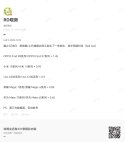As consumers (myself included), we should all welcome more competition in the market . I've said repeatedly that I use both Huawei and Xiaomi premium phones, but it's important to base conclusions off of facts. The latest data I have is that as of 2/8/25, the Xiaomi 15 series is actually selling worse than the Xiaomi 14 series by 5%.

Unlike Xiaomi, Huawei has older models (Mate 60 and Pura 70 series) selling in large numbers in addition to the delayed Mate 70 series. As evidence, I've organized the ordinal sales of domestic premium phones since the release of the Mate 70 series, which makes for a fair comparison (data taken from RD观测 on Weibo, which includes the top 30 models per week):
| W49 2024 | Mate 70 > Mate 70 Pro+ |
| W50 2024 | Mate 70 > Mate 60 > Xiaomi 15 > Pura 70 Pro |
| W51 2024 | Mate 70 > Mate 60 > Xiaomi 15 > Pura 70 Pro > Pura 70 Satellite Edition > Find X8 |
| W52 2024 | Mate 70 > Mate 60 > Mate 70 Pro > Xiaomi 15 > Pura 70 Satellite Edition > Find X8 |
| W1 2025 | Mate 70 > Mate 60 > Pura 70 Pro > Mate 70 Pro+ > Pura 70 Satellite Edition > Xiaomi 15 |
| W2 2025 | Mate 70 > Mate 60 >Pura 70 Pro > Mate 70 Pro+ > Xiaomi 15 > Pura 70 Satellite Edition |
| W3 2025 | Mate 70 > Pura 70 Pro >Mate 60 > Xiaomi 15 |
| W4 2025 | Xiaomi 15 > Pura 70 Pro > Mate 70 > Pura 70 Satellite Edition > Huawei Mate 60 |
| W5 2025 | Xiaomi 15 > Pura 70 Pro >Pura 70 Satellite Edition >Mate 70 > Mate 60 |
We can see Huawei has substantial premium sales outside of the Mate 70 Series, while the 15 series is the entirety of Xiaomi's premium sales.
It simply absurd to say the Mate 70 series represents Huawei's premium sales, especially since it was delayed.
As I said before, it's debatable whether the Xiaomi 15 non-pro is a premium phone after factoring in subsidies. Even if it is, we can conduct a careful analysis of sales from 10/29 (Xiaomi 15 series release) to 2/8 (latest data). This is the most generous window for Xiaomi. If we start at the Mate 70 release, the results would favor Huawei even more.
Sales of the 15 series (Xiaomi's entire premium sales) declined 5% in the period of 10/29 (release) to 2/8 YoY relative to the 14 series (Xiaomi's entire premium sales).
For Huawei, from 10/29 to 11/26 (Mate 70 release), a period of roughly 4 weeks, Huawei sold the Pura 70 series and Mate 60 series. The previous year, Huawei only sold the Mate 60 series. In this period, Huawei's premium sales are probably the same YoY, maybe sligthly less. From 11/26 to 2/8, a period of roughly 15 weeks, Huawei sold the Mate 70 series, Pura 70 series, and Mate 60 series. The previous year, Huawei only sold the Mate 60 series. With very high confidence, Huawei's premium sales in this period are significantly more than the previous year. Therefore, Huawei's premium sales are almost certainly up YoY from 10/29 to 2/8. In summary,
we know for a fact that Xiaomi's premium sales are down, while we can say with very high confidence Huawei's sales are up. Futhermore, we know that Huawei premium phones can keep selling well over a year after their release, while that is not the case for Xiaomi.
The Xiaomi 15 series are great products, but we shouldn't cherry pick data nor discount the effect of subsidies, which will almost certainly not be present in future years. If people are wondering why Xiaomi's sales are down, I believe it has to do with the price increase of Qualcomm SoCs, which caused Xiaomi to increase its prices while downgrading specifications like camera sensors. Oppo also sold very very well this year by integrating many iPhone features into its Find X8 series.

